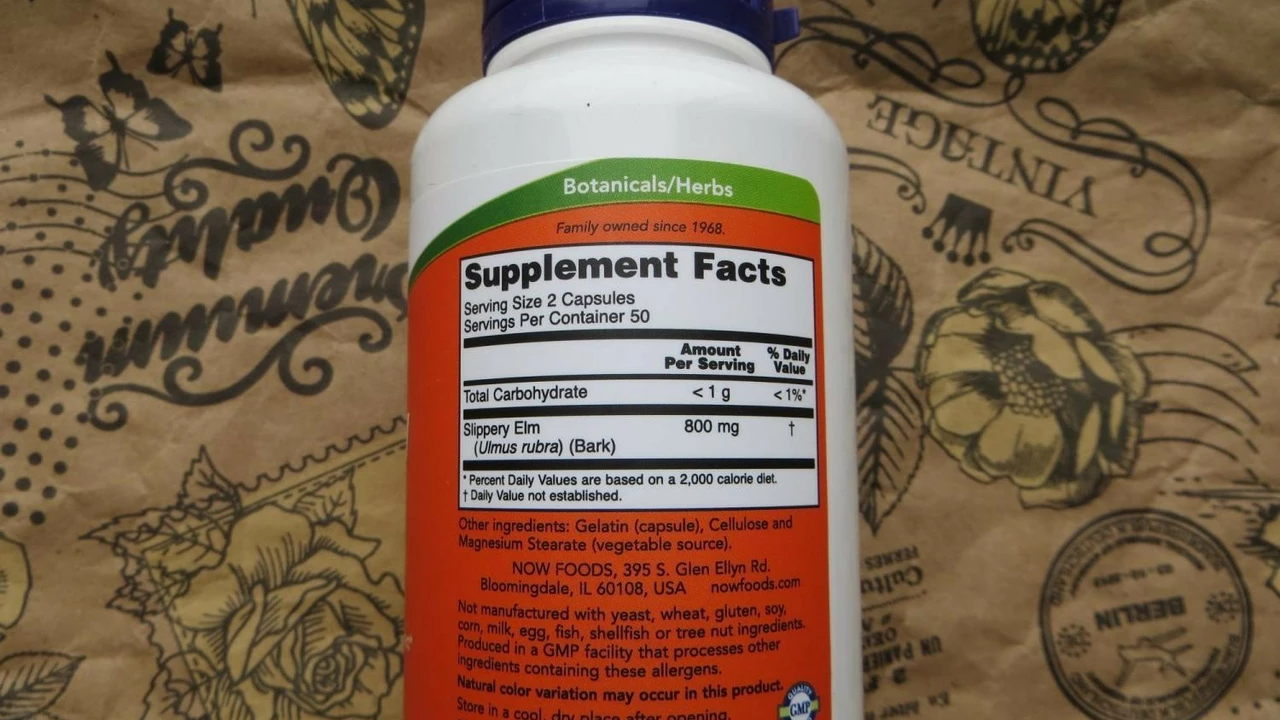Slippery Elm — what it is and why people use it
Slippery elm (Ulmus rubra) is a tree whose inner bark makes a thick, slippery mucilage when mixed with water. People use that mucilage as a soothing coating for sore throats, dry coughs, heartburn and irritated digestive lining. It’s been used in traditional medicine for a long time and still shows up in throat lozenges, teas and supplements today.
How it works is simple: the mucilage forms a protective layer over irritated tissue. That can reduce scratchy throat feeling and calm mild reflux or bowel irritation. Scientists have run small clinical trials and lab studies that match those traditional uses — the evidence isn’t huge, but it’s consistent that the mucilage soothes mucous membranes.
How to prepare and use slippery elm
Best ways to use it depend on the form you have. For powder (most common): mix 1 teaspoon of powder with 2–3 tablespoons of cool water to make a paste, then add 6–8 oz of hot water and stir until it’s smooth. Sip while warm. For capsules, follow the label; many products use 400–1000 mg per dose. Lozenges and throat sprays are useful for on-the-go relief.
General practical tips: take slippery elm 30–60 minutes after meals to soothe reflux symptoms, and keep it at least two hours away from prescription medications because the mucilage can slow absorption. If you use it for a sore throat, repeat every 4–6 hours as needed. Always follow product directions on commercial preparations.
Safety, interactions and what to watch for
Slippery elm is usually well tolerated. Side effects are uncommon but may include mild stomach upset or allergic reaction if you’re sensitive to tree pollen or bark. Because the mucilage can affect how your body absorbs drugs, separate it from critical medications (like thyroid pills or wartime blood thinners) by at least two hours.
A note on pregnancy and breastfeeding: there’s not enough reliable data, so avoid using slippery elm during pregnancy or nursing unless a clinician says it’s okay. Also consider sustainability: inner bark harvest can harm wild trees, so look for brands that name a cultivated source or use sustainable harvest methods.
When choosing a product, pick brands with third-party testing for contaminants (heavy metals, microbes) and clear sourcing info. Organic labeling helps but isn’t the only quality marker — third-party certificates and transparent ingredient lists matter more.
Want more reading? Below are related articles from our site tagged with slippery elm — they cover digestion, reflux meds and supplements that often come up with this herb.
Related articles
- GERD and Alcohol: Smart Tips for Drinking Safely on Reflux Meds — tips for balancing reflux meds and lifestyle.
- Prilosec vs Omeprazole: The Real Differences — facts on PPIs that people often use alongside soothing herbs.
- Unlock the Power of Chlorella: Detoxify and Rejuvenate — another natural supplement readers compare with herbal options.
- Vitamins and Minerals for Fertility: Boost Your Reproductive Health Naturally — complements if you’re building broader supplement plans.
- Unlock the Power of Bergamot: The Ultimate Guide — practical guide to another heart-friendly supplement.
If you want quick, personal advice on using slippery elm with a specific medication or condition, ask your pharmacist or doctor. They can confirm timing, dose and whether it’s a safe addition for you.

